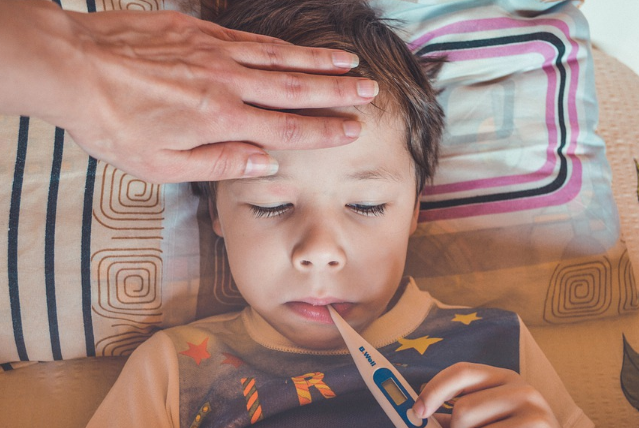4 Steps To Take When Your Child Gets a Fever
 When the human brain senses a bacteria or virus in your child’s system, the brain’s response is to increase the temperature within the body to burn off the invader. With each rising degree, your child may become more uncomfortable, and some children are more prone to fever discomfort than others. Helplessly watching your sick child can be difficult, and knowing what to do can escape you. Here are four steps to take whenever your child gets a fever.
When the human brain senses a bacteria or virus in your child’s system, the brain’s response is to increase the temperature within the body to burn off the invader. With each rising degree, your child may become more uncomfortable, and some children are more prone to fever discomfort than others. Helplessly watching your sick child can be difficult, and knowing what to do can escape you. Here are four steps to take whenever your child gets a fever.
1. Watch the Temperature
Children with fevers under 101 degrees Fahrenheit should be watched for signs of dehydration, but unless there is an underlying preexisting medical condition, you should let the body fight the virus by burning it out. If your child continues to eat and sleep, there is generally little to worry about.
2. Use a Sponge Bath
Although it may seem counter-intuitive to bathe a feverish child in warm water, the water can help. As the water evaporates off the skin, it can signal the brain to lower the fever. Flush water over the groin, stomach, and under the arms for best results.
3. Call the Hot Line
Call your family medicine Boston MA hotline if you have questions about medication, seizures, or rashes. Don’t fret about contacting someone; it is always best to talk to a nurse or doctor if you have concerns. If your child complains of stomach, throat, or neck pain, or if your child appears very ill and is vomiting while having a fever, call the doctor.
4. See Your Doctor
If your child’s fever ever exceeds 101 degrees Fahrenheit, contact your doctor’s healthcare team immediately. A high temperature is the body’s way of letting you know there may be a serious complication that a medical expert needs to diagnose.
If your child develops a fever, monitor it carefully, try a sponge bath to lower the fever, and call the hotline if you have concerns. It is better to be safe than sorry when it comes to your little one’s health.
Provided by Worlds Of Wow